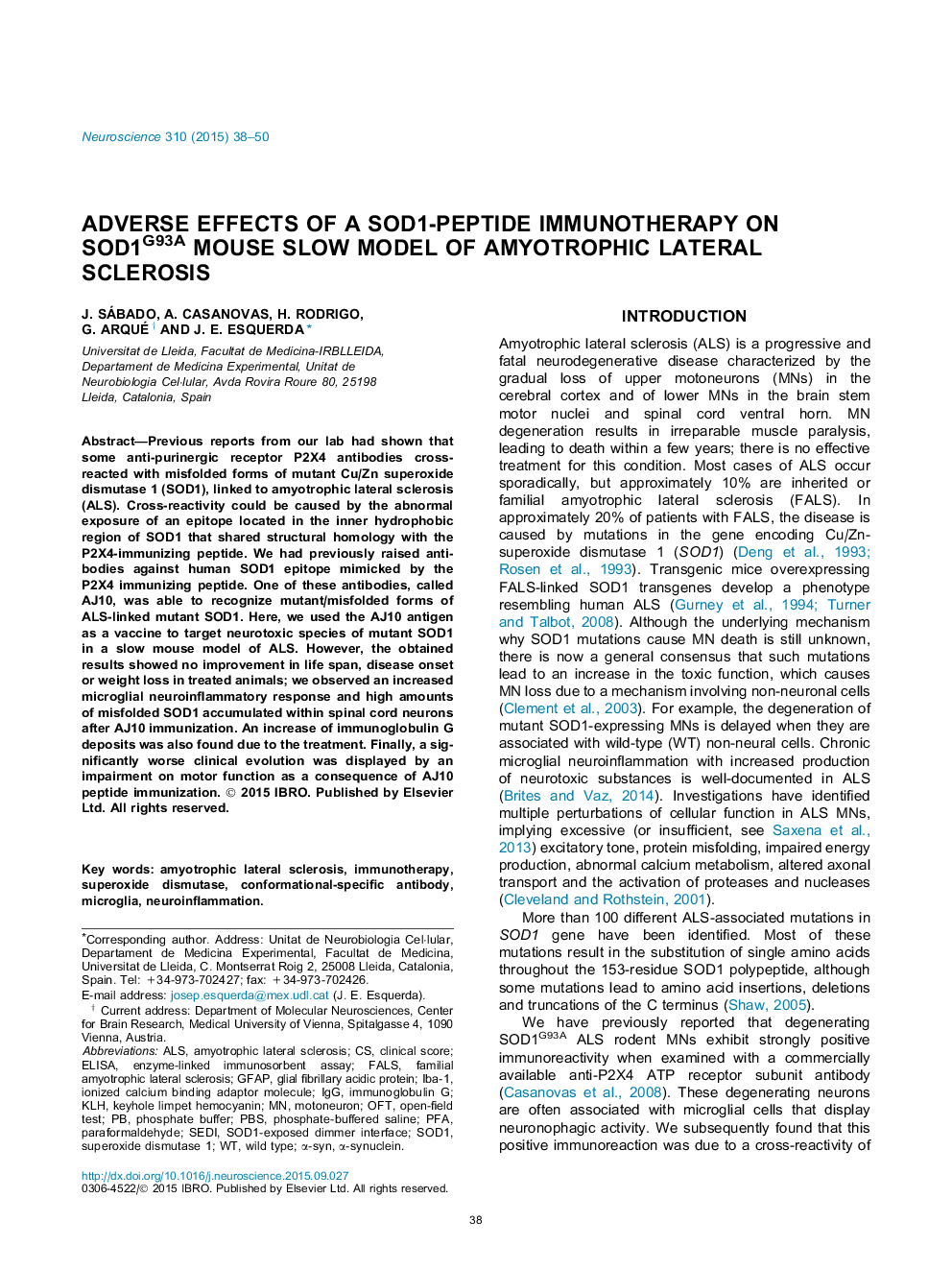| Article ID | Journal | Published Year | Pages | File Type |
|---|---|---|---|---|
| 6271570 | Neuroscience | 2015 | 13 Pages |
Abstract
Previous reports from our lab had shown that some anti-purinergic receptor P2X4 antibodies cross-reacted with misfolded forms of mutant Cu/Zn superoxide dismutase 1 (SOD1), linked to amyotrophic lateral sclerosis (ALS). Cross-reactivity could be caused by the abnormal exposure of an epitope located in the inner hydrophobic region of SOD1 that shared structural homology with the P2X4-immunizing peptide. We had previously raised antibodies against human SOD1 epitope mimicked by the P2X4 immunizing peptide. One of these antibodies, called AJ10, was able to recognize mutant/misfolded forms of ALS-linked mutant SOD1. Here, we used the AJ10 antigen as a vaccine to target neurotoxic species of mutant SOD1 in a slow mouse model of ALS. However, the obtained results showed no improvement in life span, disease onset or weight loss in treated animals; we observed an increased microglial neuroinflammatory response and high amounts of misfolded SOD1 accumulated within spinal cord neurons after AJ10 immunization. An increase of immunoglobulin G deposits was also found due to the treatment. Finally, a significantly worse clinical evolution was displayed by an impairment on motor function as a consequence of AJ10 peptide immunization.
Keywords
PBSIgGionized calcium binding adaptor moleculeSOD1OFTGFAPmotoneuronPFAα-SynKLHIba-1α-synucleinopen-field testamyotrophic lateral sclerosisfamilial amyotrophic lateral sclerosisNeuroinflammationimmunotherapyimmunoglobulin Gphosphate bufferALSELISAEnzyme-linked immunosorbent assayfALSsuperoxide dismutase 1Superoxide dismutasePhosphate-buffered salineMicrogliaClinical scorewild typeparaformaldehydeGlial fibrillary acidic proteinkeyhole limpet hemocyanin
Related Topics
Life Sciences
Neuroscience
Neuroscience (General)
Authors
J. Sábado, A. Casanovas, H. Rodrigo, G. Arqué, J.E. Esquerda,
